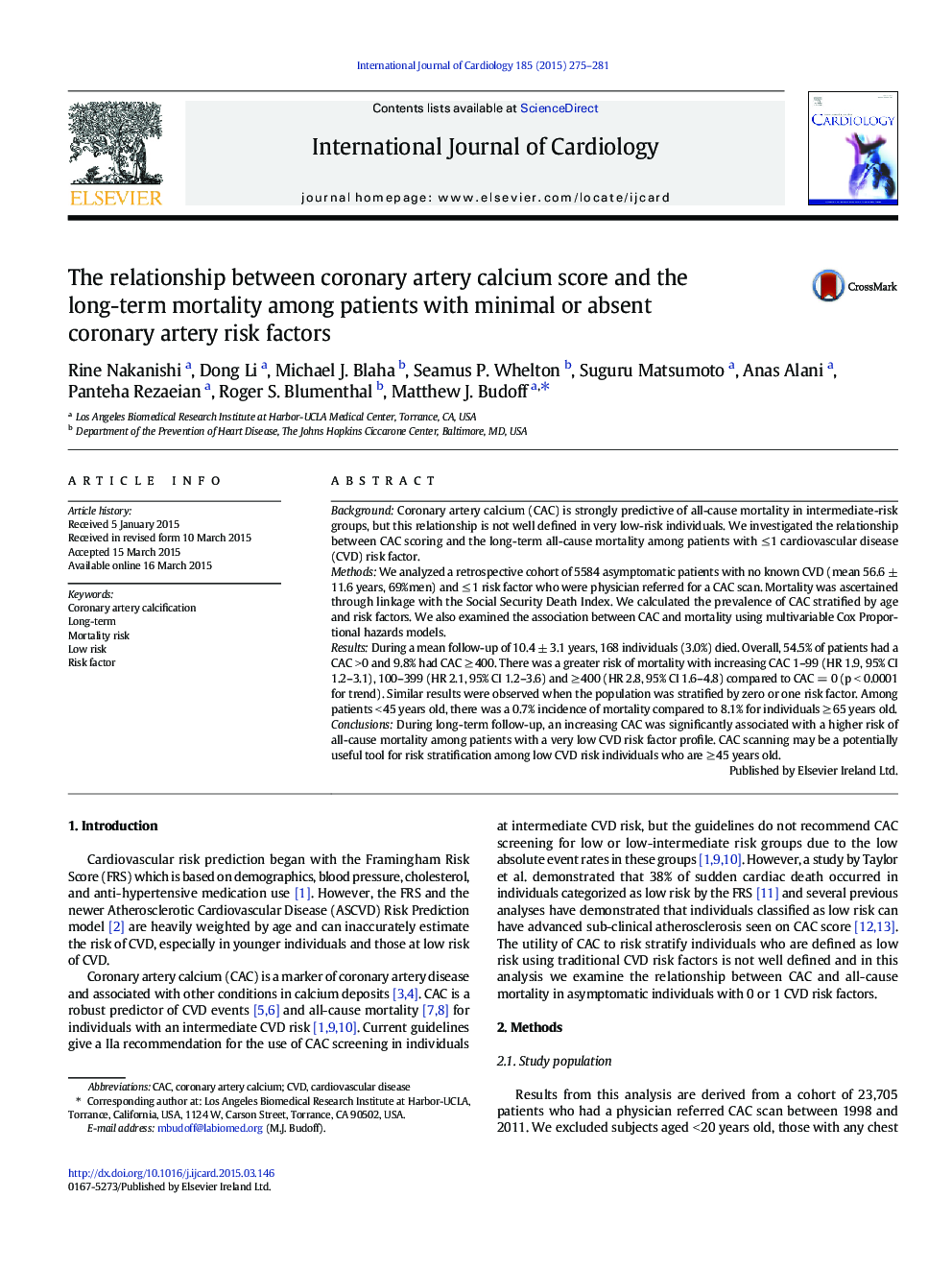| کد مقاله | کد نشریه | سال انتشار | مقاله انگلیسی | نسخه تمام متن |
|---|---|---|---|---|
| 2929093 | 1576167 | 2015 | 7 صفحه PDF | دانلود رایگان |
BackgroundCoronary artery calcium (CAC) is strongly predictive of all-cause mortality in intermediate-risk groups, but this relationship is not well defined in very low-risk individuals. We investigated the relationship between CAC scoring and the long-term all-cause mortality among patients with ≤ 1 cardiovascular disease (CVD) risk factor.MethodsWe analyzed a retrospective cohort of 5584 asymptomatic patients with no known CVD (mean 56.6 ± 11.6 years, 69%men) and ≤ 1 risk factor who were physician referred for a CAC scan. Mortality was ascertained through linkage with the Social Security Death Index. We calculated the prevalence of CAC stratified by age and risk factors. We also examined the association between CAC and mortality using multivariable Cox Proportional hazards models.ResultsDuring a mean follow-up of 10.4 ± 3.1 years, 168 individuals (3.0%) died. Overall, 54.5% of patients had a CAC > 0 and 9.8% had CAC ≥ 400. There was a greater risk of mortality with increasing CAC 1–99 (HR 1.9, 95% CI 1.2–3.1), 100–399 (HR 2.1, 95% CI 1.2–3.6) and ≥ 400 (HR 2.8, 95% CI 1.6–4.8) compared to CAC = 0 (p < 0.0001 for trend). Similar results were observed when the population was stratified by zero or one risk factor. Among patients < 45 years old, there was a 0.7% incidence of mortality compared to 8.1% for individuals ≥ 65 years old.ConclusionsDuring long-term follow-up, an increasing CAC was significantly associated with a higher risk of all-cause mortality among patients with a very low CVD risk factor profile. CAC scanning may be a potentially useful tool for risk stratification among low CVD risk individuals who are ≥ 45 years old.
Journal: International Journal of Cardiology - Volume 185, 15 April 2015, Pages 275–281
